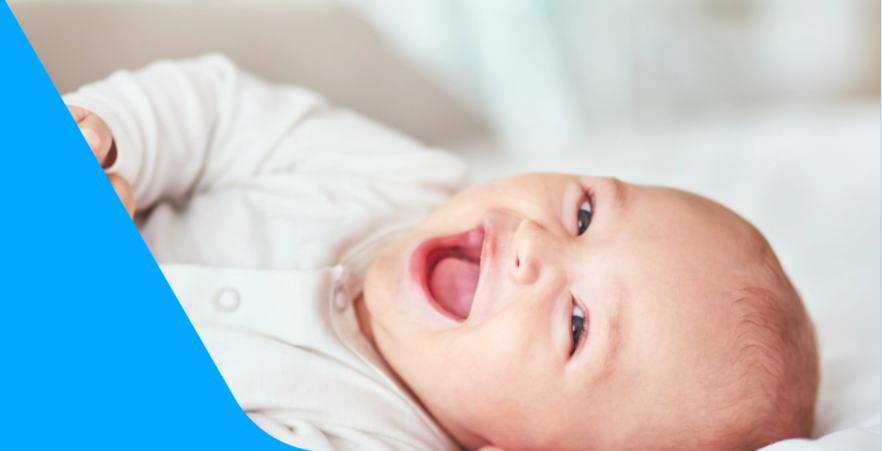From smiles to laughter to making you laugh: How does it all develop in your baby?
Baby Laughs: Why They’re As Irresistible to Researchers as Parents
Your baby’s grins and giggles aren’t just for laughs. Discover how they play a key role in communication.
Some of the funniest (and most viral) videos online show babies doing nothing much besides laughing. And laughing. And laughing! Beyond making us grin, too, it turns out that laughter plays an important role in the development of social and communication skills. For this reason, researchers have been taking a hard look at just what’s so funny—and serious—about baby laughter. Here’s what they’re finding.
Laughing (and Smiling) Starts Early
Laughter, like crying, is a way babies communicate before they can talk. Babies may issue their first chuckle as early as 2 to 3 months of age.
In general, the first-ever smile flits across a baby’s face during the first month, and by the end of the second month, the first social smile (directed at a person—likely mom or dad) appears. Laughing most often occurs by the end of 4 months.
What’s So Funny?
Obviously, it’s not the punch line to a knock-knock joke that gets your baby squealing. Research at the Birkbeck Babylab’s Laughter Project, conducted at the Birkbeck Center for Brain and Cognitive Development, University of London, shows that babies laugh for different reasons than adults do: primarily because they are surprised or delighted.
The specific causes depend on what a baby knows. For instance, in the Babylab, one of the researchers has blue hair. The babies don’t respond to the unnatural color, likely because they haven’t yet been exposed to the variety of “normal” hair color. On the other hand, preschoolers in the project, who have developed expectations about natural hair color, find it hysterical. Likewise, a toddler might giggle if a dog in a story says “meow” because she’s already learned that dogs say “woof.” A meow is surprising—and funny.
Early research at the Babylab shows that moms and dads seem to be equally funny.
Humor Changes as Kids Grow
At around 1 year old, babies learn to make you smile. They start to develop a kind of slapstick physical humor, doing things over and over to make other people laugh—making a silly expression, for example. Toddlers become pros at repeating silly antics over and over. Your smile eggs them on to do it again.
Joke telling, on the other hand, is an advanced skill that shows up years after kids can talk. It requires not just language skills, but more sophisticated logic and thinking that take time to develop.
For a Happier Baby
Babies laugh, in short, when they are happy and healthy. Laughter is a social activity, researchers say, that bonds people together. It’s a social dance of back-and-forth connection—“I laugh with you, and you laugh with me.” So simply spending time with your baby, being attentive, feeding her a nutritious diet, and engaging in activities that entertain and interest her up the odds that she’ll chortle and grin.
Research also shows that certain baby games are winners in the smiles and laughter department: Tickles, blowing raspberries on your baby’s belly, peekaboo, and using funny voices all bring on the grins.
How what you do now can help your baby learn about everything from communication to healthy relationships.





